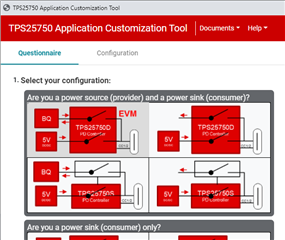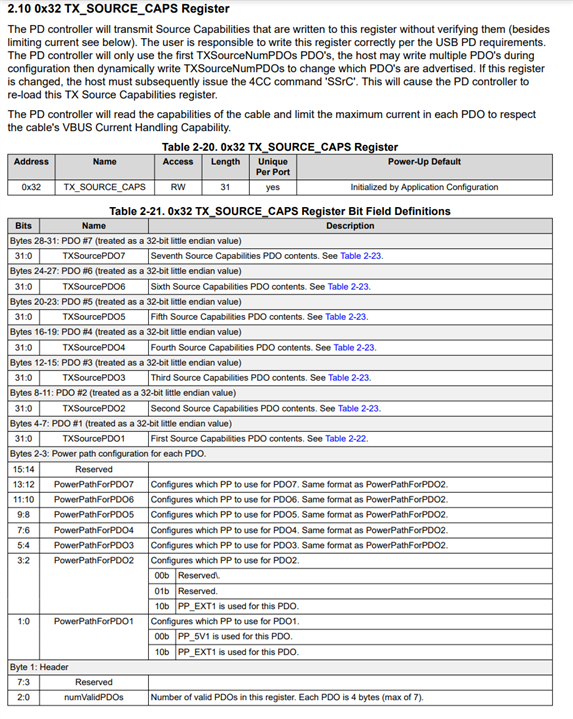Hello,
If I understand correctly, for a sink/source configuration (default in the config tool, as shown below), then the 5V/3A PPO is sourced via the 5V regulator, and not from the BQ. Is there a way to change this in the configuration tool? I can still have 5V attached (supplying up to ~1A), but in our current design our 5V regulator cannot handle the total worst-case current draw, whereas the BQ has access to the cells in the pack. This would simplify our design if we could just always use the BQ for sourcing output current.
Thanks,
-Eric Castle



